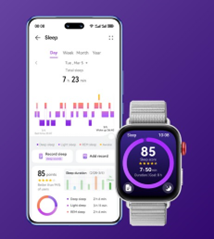The Energy to Lead program drives colleges and universities to design efficient, effective, and sustainable energy solutions that provide the necessary funding and allows them to capitalize on these resources for their educational missions. When you invest in this initiative, you're investing in your children's futures. There is no better time than the present to consider the potential of the earth's climate change and what we can do to address it. It's time to go green with energy efficiency and sustainability. Now is the perfect opportunity to get started.
Today, many buildings are still not designed to meet current energy demands or to improve the building performance that saves money, while also reducing emissions. This retrofit effort centers on two major strategies. One focuses on improving the energy performance of existing buildings, and the second focuses on helping those buildings become net zero energy performers.
The success of this project depends upon the first strategy, which is building and retrofitting buildings that are more energy efficient and reduce carbon pollution from the building as well. The second strategy requires a collaboration between students, faculty and staff from the New York State Department of Environmental Conservation, the New York City Department of Education, the New York State Higher Education Association, New York City Economic Development Corporation, New York City Schools Corporation, New York State Office of the Governor, and New York City Schools. This project will also work with our international partners. In fact, we're hoping to take this initiative global.

In collaboration with New York State and with the New York City Department of Education, we have developed a blueprint for the Energy to Lead program, focusing on the first strategy, building and retrofitting buildings to improve the building's energy efficiency. The second strategy focuses on helping those buildings become net zero energy performers by reducing greenhouse gases and promoting "sustainable building." We are also looking at the ways in which people can participate in the program.
In other words, we're trying to help the New York State Department of Environmental Protection and the New York City Department of Education, for example, achieve the goals set forth in the Next Generation Energy Performance Standards (NGER) for the buildings in New York. Those two departments have a joint committee working on the blueprint for the New York State Energy Performance Standards. Through the initiative, we will be able to show New York State what their goal should be, while we provide a tool through the research center that can be used by other states to achieve similar results. The research center will not only assist the state departments of environmental protection and education with the implementation of the energy performance standards for buildings in New York, but it will also provide a venue through which the states can come together to find ways in which to share information on effective building practices.
The reason that this project is called the Next Generation Energy Performance Standards is the fact that the state of New York is now considering developing a new benchmark for the buildings in New York State. There have been many different initiatives taken over the years for the betterment of the state. Many of those initiatives have included retrofit programs for commercial buildings and the construction of schools in upstate New York. The idea of the Next Generation Energy Performance Standards is to take a look at the ways that people can work together to make the building envelope more efficient. The living lab is designed around the idea of the "green building" concept and can play a role in the efforts of the state departments of environmental protection and education to find ways to achieve those goals.
The idea behind the Next Generation Energy Performance Standards is that the building envelope should be more efficient when it comes to the energy that is used in the building. This would be achieved by using an optimized amount of natural daylight, which are free, as well as the energy that is saved by the proper design of the windows. The way that this is achieved is through the use of passive solar heat and daylight throughout the day. What is meant by passive solar heat is that the building envelope does not require any heat sources inside of it to stay warm during the cold periods of the winter and cool during the hot months of the summer. This means that the building itself does not have to hold heat, which is one of the reasons why a traditional furnace is not able to provide the kind of heating that is required in a home.
Another aspect of the Next Generation Energy Performance Standards is to consider the ways that the different components of the building envelope are being powered. These include heating and cooling systems, as well as air conditioning systems. As more information is developed on the various forms of alternative energy that can be used to power different parts of a home, the standards that are developed will become more effective. While the energy to lead with the energy performance standards for New York State is about making buildings more energy efficient, the federal government as well as the industry are working hard to develop renewable sources of energy, such as by the use of geothermal heat pumps.






